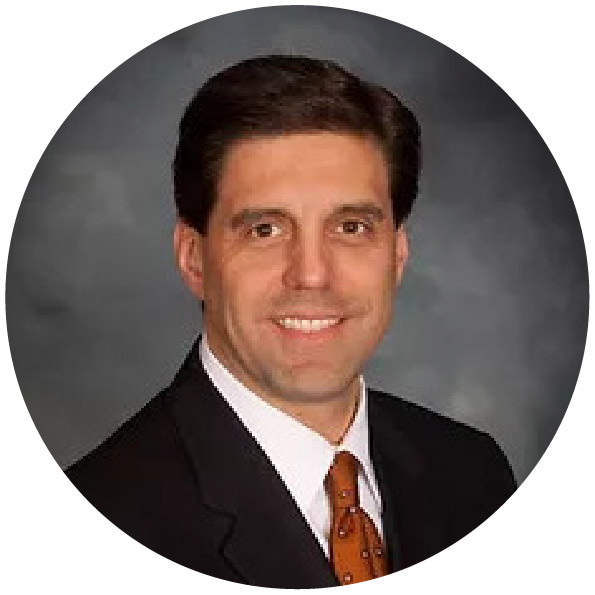By Bill Bojan, Founder of Integrated Governance Solutions, LLC
Resilience as an organization has always been important and necessary to survive and thrive. It is even more important in an environment of uncertainty and even chaos, such as we have been engulfed in over the last two to three years. But in such times your organization’s resilience, while more important than ever, is also being tested and strained at higher levels – likely the highest level most leaders have ever experienced in their careers. This is especially true for healthcare related organizations, and most certainly for nonprofit senior living organizations. The stakes are high.
 How do we need to respond as leaders? How do we prepare and equip our organizations to be healthy and resilient in carrying out our very important missions despite operating in extremely challenging times? I think most of us would agree that our world and environments within which we operate have seen some significant shifts, many of which may very well represent long-term, if not permanent change. We can’t just put our heads down and wait for the easier days that are “just around the corner.” We need to respond, and with a sense of resolve and urgency. But how?
How do we need to respond as leaders? How do we prepare and equip our organizations to be healthy and resilient in carrying out our very important missions despite operating in extremely challenging times? I think most of us would agree that our world and environments within which we operate have seen some significant shifts, many of which may very well represent long-term, if not permanent change. We can’t just put our heads down and wait for the easier days that are “just around the corner.” We need to respond, and with a sense of resolve and urgency. But how?
The Key Factors for Resilience
In my 35 years of serving and advising across a broad range of healthcare organizations from the largest and most sophisticated enterprises to smaller single site nonprofit senior living organizations, I have clearly and consistently been able to see what makes for the most healthy and resilient organizations long-term. Resilient organizations are agile. Agile organizations have strong and well-equipped “navigation systems.” When you think about it, isn’t the job of any leader (whether that be a CEO or an independent board director) to help navigate the organization wisely – and with the needed level of agility and responsiveness to what’s going on in their ecosystem (i.e., economy, industry, market, etc.)? Why does the strength, sophistication, and agility of your organization’s “navigation system” matter? Because when the environment in which you are navigating becomes highly unpredictable, higher-risk, and more challenging, you need a stronger navigation system to deal with higher likelihood and consequences of costly errors, dangerous surprises, and tiring re-work or back-tracking because of sub-optimal decisions.
The Components of a Strong Organizational Navigation System
So, what does a strong, fit-for-purpose navigation system look like in today’s environment? First, we need to understand the components of an organization’s navigational system, especially within a nonprofit senior living environment:
- Execution – typically carried out by a qualified, seasoned management team.
- Oversight – typically carried out by an experienced, engaged board of directors.
- Verification – typically carried out by a strong, well-positioned monitoring discipline.
In today’s environment, these three components must not only be individually excellent and high-performing, but also work together in a highly integrated, interactive, and communicative way. Even excellent components that do not work effectively together as a “navigation system” will result in a lack of wise navigation, poor agility, and little to no resilience as an organization. In most cases, these three components center their duties and responsibilities around four main things: (1) A Clear Mission, (2) An Aligned Strategy, (3) Managed Risk, and (4) Strong Controls. If you have strong and well-coordinated execution, oversight, and verification around these four things, you are much more likely to be a well-navigated, agile, and resilient organization.
An Aviation Analogy for Strong Navigation
To bring the importance of this home, I offer the following analogy. Navigating well in an aviation environment is not a “nice-to-have.” It is a “must-have” for survival. In the same way, I would suggest that more sophisticated navigation systems to respond to the current unpredictable, high-risk, and often volatile nonprofit senior living operating environment is equally important for surviving and thriving going forward. Considering how many airplanes are taking off, flying, and landing throughout the world every day, isn’t it amazing how few accidents and mishaps actually occur? Why is that the case? It’s pretty simple. It is because of the navigation systems that have been developed and are required for each airplane to have before it is allowed to take off and fly. What would happen if the navigation systems were weak, unsophisticated, and poorly operated? I think we all know the results would be tragic. Yet, this is where many of our nonprofit senior living organizations are today. The world, the industry, and the operating environment have changed and continue to change dramatically. Yet, often we have not made the necessary changes and refinements to our navigation systems to respond to the more turbulent skies we are flying in.
There are the same three navigational components in an aviation scenario:
EXECUTION: There is the pilot, co-pilot and crew who are responsible for flying the plane safely and successful to the intended destination. They have a clear mission to execute (get from point A to point B safely), based on an aligned strategy (a flight plan that has been developed, agreed to by the needed parties, with clear contingency plans and an established course correction process), with effectively managed risk(based on relevant, timely decision-making data, and a clear decision-making process), and well-established strong controls (safety precautions and procedures that a well-trained cockpit and crew is fully trained to carry out). There is a strong parallel here to an organizational management team responsible for execution.
OVERSIGHT: There is the control tower, which provides counsel and strategic guidance from a bigger-picture perspective to the people actually flying the plane. Their job is to support the execution team and hold them accountable to carry out the mission, execute the strategy (especially when it needs to change based on a course correction or especially in an unexpected emergency situation), manage the risk (by providing perspective and wise counsel), and ensuring strong controls are in place and carried out. There is a strong parallel here to an experienced and engaged board of directors. In my experience, we too often see either “radio silent” boards that are not engaging as they should or providing useful strategic guidance to the cockpit, or boards/directors who feel it is necessary to join the pilot in the cockpit to actively co-fly the plane. Both of these scenarios are sub-optimal at best, or completely ineffective at worst, causing faulty or slow-to-respond navigation systems.
VERIFICATION: There is also the instrumentation panel in the plane, and supporting data systems in the control tower that serve both the cockpit and the control tower. This supplies needed information of critical success factors and early warning of trouble or flight risks. There is a strong parallel here to a good system of risk management, data/analytics for decision-making, performance management, and early warning indicators. There is a strong parallel here to monitoring disciplines that provide highly valuable insights and information to both management (the cockpit) as well as the board of directors (the control tower).
Today’s Organizational Health Reality in Nonprofit Senior Living
In my experience, here is what I see in many if not most nonprofit senior living organizations that have been understandably overwhelmed and over-taxed by the last few years of constant change, a global pandemic, and an increasingly fatigued and under-staffed workforce:
- The management execution team has not yet successfully created a more real-time, responsive strategy development, execution, and monitoring process to deal with the current realities of the operating environment. Constant strategic agility and course correction is what is needed to successfully navigate today’s environment. Not having the needed navigation processes in place leads to breakdowns in organizational clarity, focus and alignment.
- The monitoring verification team has not yet successfully created a more robust risk identification, management, and monitoring process to help the management execution team and the board oversight team carry out their increasingly difficult roles and responsibilities. This results in a less effective navigation system overall, since the people flying and guiding the plane do not have the real-time risk information that is needed to operate at the highest level of performance and agility.
- The board oversight team has not yet successfully developed a more agile, real-time oversight process for strategy and risk management. Part of this issue is that the processes for strategy and risk management are no longer optimal to respond to the current environment (see above). Another contributing factor is that boards/board directors have not been appropriately trained and equipped in how to carry out their crucial role in today’s environment. This results in either slowing the organization down, or not helping them to navigate in the needed direction.
Responding to the Critical and Urgent Need
My firm is partnering with LeadingAge National to offer a navigation system diagnostic and peer benchmark opportunity to all LeadingAge members (using a proprietary system called VitalSigns, which includes Board VitalSigns for the board oversight team, Strategy VitalSigns and Operational VitalSigns for the management execution team, and Risk VitalSigns for the monitoring verification team). This opportunity also includes an interactive workshop to:
- Analyze your organization’s benchmark results with your team to gather insights;
- Engage you and other LeadingAge members in measuring and assessing navigation system strength (current level and desired level);
- Learn about best practices to strengthen your organization’s navigation system to desired levels;
- Set a plan to take specific and appropriate action to make sure your organization has a strong navigation system that enables needed agility and resilience to survive and thrive in today’s challenging environment.
For more information, contact the LeadingAge National Office and connect with Majd Alwan or Susan Donley.


